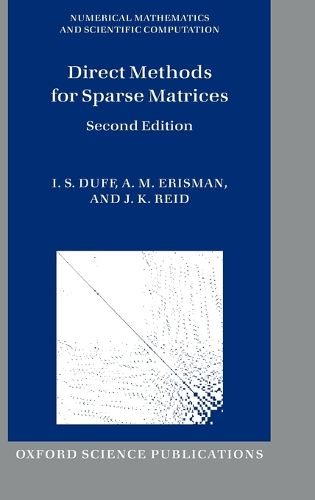Readings Newsletter
Become a Readings Member to make your shopping experience even easier.
Sign in or sign up for free!
You’re not far away from qualifying for FREE standard shipping within Australia
You’ve qualified for FREE standard shipping within Australia
The cart is loading…






The subject of sparse matrices has its root in such diverse fields as management science, power systems analysis, surveying, circuit theory, and structural analysis. Efficient use of sparsity is a key to solving large problems in many fields. This second edition is a complete rewrite of the first edition published 30 years ago. Much has changed since that time. Problems have grown greatly in size and complexity; nearly all examples in the first edition were of order less than 5,000 in the first edition, and are often more than a million in the second edition. Computer architectures are now much more complex, requiring new ways of adapting algorithms to parallel environments with memory hierarchies. Because the area is such an important one to all of computational science and engineering, a huge amount of research has been done in the last 30 years, some of it by the authors themselves. This new research is integrated into the text with a clear explanation of the underlying mathematics and algorithms.New research that is described includes new techniques for scaling and error control, new orderings, new combinatorial techniques for partitioning both symmetric and unsymmetric problems, and a detailed description of the multifrontal approach to solving systems that was pioneered by the research of the authors and colleagues. This includes a discussion of techniques for exploiting parallel architectures and new work for indefinite and unsymmetric systems.
$9.00 standard shipping within Australia
FREE standard shipping within Australia for orders over $100.00
Express & International shipping calculated at checkout
Stock availability can be subject to change without notice. We recommend calling the shop or contacting our online team to check availability of low stock items. Please see our Shopping Online page for more details.
The subject of sparse matrices has its root in such diverse fields as management science, power systems analysis, surveying, circuit theory, and structural analysis. Efficient use of sparsity is a key to solving large problems in many fields. This second edition is a complete rewrite of the first edition published 30 years ago. Much has changed since that time. Problems have grown greatly in size and complexity; nearly all examples in the first edition were of order less than 5,000 in the first edition, and are often more than a million in the second edition. Computer architectures are now much more complex, requiring new ways of adapting algorithms to parallel environments with memory hierarchies. Because the area is such an important one to all of computational science and engineering, a huge amount of research has been done in the last 30 years, some of it by the authors themselves. This new research is integrated into the text with a clear explanation of the underlying mathematics and algorithms.New research that is described includes new techniques for scaling and error control, new orderings, new combinatorial techniques for partitioning both symmetric and unsymmetric problems, and a detailed description of the multifrontal approach to solving systems that was pioneered by the research of the authors and colleagues. This includes a discussion of techniques for exploiting parallel architectures and new work for indefinite and unsymmetric systems.